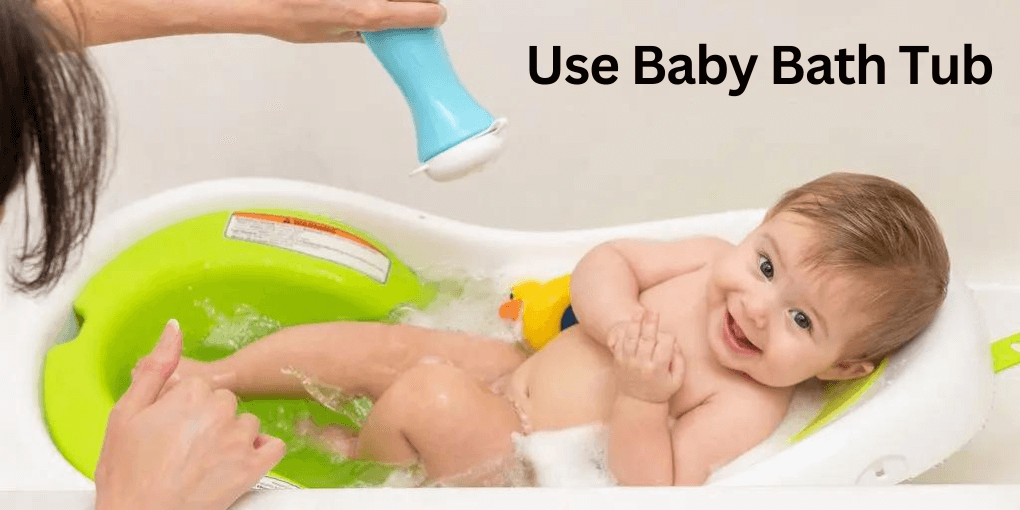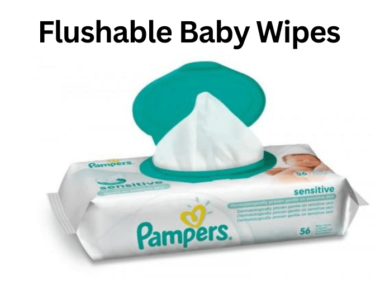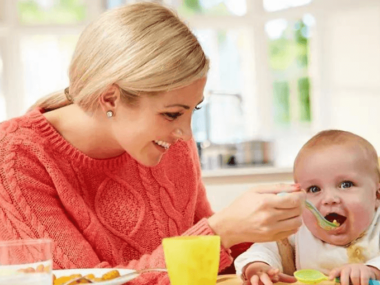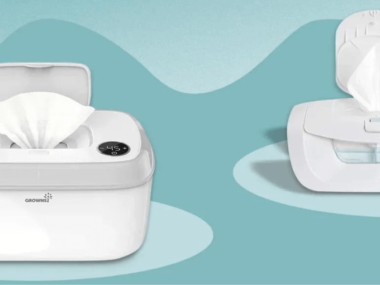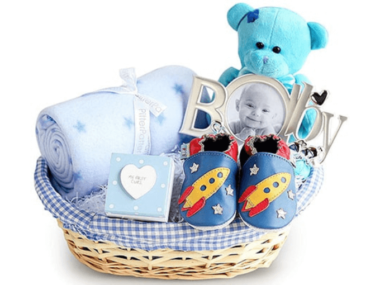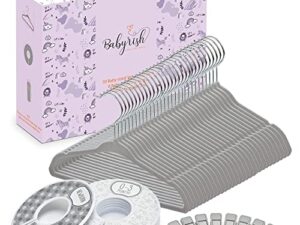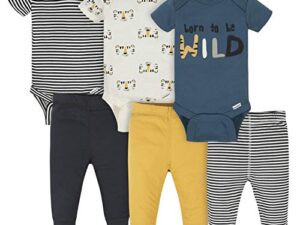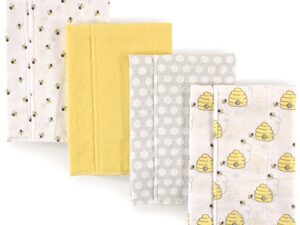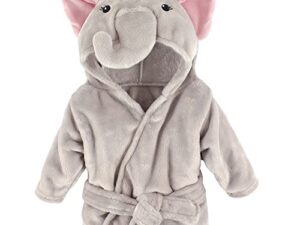Table of Contents Show
A baby bath tub is a small tub specifically designed for bathing infants and babies. It is usually made of plastic and has a built-in seat or padding to provide support and safety for the baby while bathing.

Some baby bath tubs also come with features like temperature indicators and drainage systems.
They are portable and can be placed inside a regular bathtub or used independently on a flat surface.
Bathing a newborn baby can be an enjoyable and bonding experience for both parents and child.
However, ensuring the safety and comfort of the little one during bath time is of utmost importance.
This is where a baby bath tub becomes an invaluable accessory for new parents. A baby bath tub is specifically designed to provide a secure and supportive environment for bathing infants, allowing parents to confidently care for and clean their newborns without any worries.
Choosing the Right Baby Bath Tub
Choosing the right baby bath tub is important for ensuring your baby’s safety and comfort during bath time.Here are some things to think about before choosing:
- Size and Design: Look for a baby bath tub that is the right size for your baby. It should be deep enough to support your baby’s body but not too deep that they could slip under the water. The tub should also have a design that allows your baby to sit comfortably and securely.
- Material: Baby bath tubs can be made from various materials such as plastic, foam, or inflatable. Plastic tubs are easy to clean and durable, while foam tubs are soft and comfortable. Inflatable tubs are convenient for travel, but make sure they are made from safe and durable materials.
- Safety Features: Look for a baby bath tub that has safety features like non-slip surfaces and support for your baby’s head and neck. Some tubs also come with a built-in thermometer to help you ensure that the water temperature is safe for your baby.
- Ease of Use: Consider how easy the bath tub is to use. Look for features like a drain plug or a quick-drying design that makes emptying and cleaning the tub easy. It should also be lightweight and portable if you plan to use it in multiple locations.
- Storage: If you have limited space, consider a baby bath tub that is easy to store. Look for tubs that can be folded, collapse, or hang for convenient storage.
- Reviews and Recommendations: Read reviews from other parents to get an idea of the quality and performance of different baby bath tubs. You can also ask for recommendations from family and friends who have used specific tubs.
Guide to Bathing a Baby Bath Tub
Here is a step-by-step guide to bathing a baby in a bath tub:
Preparation
- Gather all the necessary supplies before starting, including a baby bath tub, washcloth, mild baby soap, baby shampoo, towel, clean clothes, and any other bath time essentials you may need.
- Fill the bath tub with warm water. Test the water temperature with your hand or a bath thermometer to ensure it is comfortably warm (around 37-38 degrees Celsius or 98-100 degrees Fahrenheit).
Undressing the Baby
- Undress your baby completely, leaving only their diaper on for now.
- Place a towel or a bath mat on a flat surface near the bath tub to provide a soft and safe area for drying and dressing your baby after the bath.
Placing the Baby in the Tub
- Hold your baby securely and lower them into the tub, supporting their head and neck with one hand. Gently place their bottom in the water first, followed by their legs and body.
- Make sure the water level is no higher than your baby’s chest to avoid accidental drowning or slipping.
Washing the Baby
- Wet a washcloth with the warm water and apply a small amount of mild baby soap. Gently clean your baby’s face, starting from the forehead and working your way down to the chin and neck, taking care to avoid the eyes.
- Use the washcloth to clean the rest of your baby’s body, including the arms, legs, and genital area. Be gentle and thorough, paying attention to all the creases and folds.
Washing the Hair
- Wet your baby’s head using a cup or your hand, making sure to support their neck. Apply a small amount of mild baby shampoo and gently massage their scalp with your fingertips.
- Rinse the shampoo off using a cup or by cupping your hand under the faucet. Be careful to keep your baby’s face and eyes protected from the water.
Drying and Dressing
- Lift your baby out of the tub with one hand, supporting their head and neck, and wrap them in a warm towel. Pat them dry, paying extra attention to all the gentle folds, such as behind the ears, under the neck, and in the diaper area.
- Once dry, dress your baby in clean clothes and ensure they are comfortable.
Top Safety Tips for Using a Baby Bath Tub
Using a baby bath tub requires extra caution to ensure your baby’s safety. Here are some top safety tips to keep in mind:
Always supervise your baby
Never leave your baby unattended in the bath tub, even for a moment.Always keep one hand on your infant.
Maintain a safe water temperature
Test the water temperature with your hand or a bath thermometer before placing your baby in the tub. The water should be comfortably warm, around 37-38 degrees Celsius or 98-100 degrees Fahrenheit.
Fill the tub with a safe water level
Avoid overfilling the tub. The water level should be no higher than your baby’s chest to prevent accidental drowning or slipping.
Use non-slip mats or bath tubs
Place a non-slip mat or a baby bath tub with a non-slip surface in the bottom of the tub to provide stability and prevent your baby from slipping.
Securely position your baby
When placing your baby in the bath tub, ensure they are seated securely and comfortably. Support their head and neck with one hand while using the other hand to guide their body into the water.
Avoid putting too much water on your baby’s face
Use a damp washcloth to gently clean your baby’s face, avoiding excessive water near their eyes, nose, and mouth. This can prevent water from getting in their airways.
Utilize baby bath tubs with built-in support
Choose a baby bath tub that has built-in support or contour to provide extra comfort and stability for your baby during bath time.
Benefits of Using a Baby Bath Tub
Using a baby bath tub can offer several benefits for both parents and babies. Here are some key advantages:
- Safety: Baby bath tubs are designed to provide a secure and stable bathing environment for babies. They often come with non-slip surfaces or mats to prevent slipping. The smaller size of the baby tub ensures that the baby is properly supported and reduces the risk of drowning or injury.
- Convenience: Baby bath tubs are portable and can be used anywhere, making bath time more convenient for parents. They can be placed on a countertop, table, or inside a regular bathtub, eliminating the need for parents to bend over or kneel on the floor. This can help avoid strain on parents’ backs and knees.
- Comfort: Baby bath tubs are designed with the comfort of infants in mind. Many models have gentle slopes and supportive contours that allow babies to sit or lie comfortably during bath time. This promotes relaxation and can help soothe babies.
- Hygiene: By using a baby bath tub, you can create a dedicated space for your baby’s bath time. This helps maintain hygiene by keeping the baby’s bath water separate from potentially contaminated water in the regular bathtub. Baby bath tubs are also easier to clean and sanitize compared to large bathtubs.
- Water Conservation: Baby bath tubs require less water compared to filling up an entire regular bathtub. This can contribute to water conservation efforts and also allow for faster and more efficient baths.
- Visual Stimulation: Many baby bath tubs come with built-in toys, colorful designs, or accessories that can help stimulate a baby’s visual senses. This can make bath time more engaging and enjoyable for babies.
Baby Bath Tub Accessories
There are many different accessories that can enhance your baby’s bath time experience. Here are a few well-liked examples to think about:
- Bath toys: These can make bath time more fun and enjoyable for your baby. Look for toys that are safe and appropriate for their age.
- Bath thermometer: This helps you ensure that the water temperature is safe for your baby. It can give you peace of mind and prevent scalding.
- Bath seat: A bath seat provides support and stability for your baby during bath time. It can be especially helpful during the newborn stage when babies have limited head control.
- Hooded towels: These towels are designed with a hood to keep your baby’s head warm and dry after the bath. They are usually made of soft and absorbent material.
- Bath spout cover: This accessory covers the bath faucet to protect your baby from accidentally bumping into it. It can also prevent injuries caused by hot water.
- Rinse cup: A rinse cup helps to rinse off soap and shampoo from your baby’s body without getting water in their eyes. Look for one with a soft edge that won’t cause any discomfort.
- Bath mat: A bath mat provides a non-slip surface inside the bath tub, ensuring that your baby stays safe and secure during bath time.
Maintaining Your Baby Bath Tub
To keep your baby bath tub clean and well-maintained, here are some tips:
Regular cleaning
Clean the baby bath tub after each use to remove any residue or dirt. Use a mild soap and warm water, and rinse thoroughly. Avoid using abrasive cleaning products or harsh chemicals.
Prevent mold and mildew
After cleaning, make sure the tub is completely dry to prevent the growth of mold and mildew.
Wipe it down with a clean towel or allow it to air dry. If you notice any signs of mold or mildew, clean it thoroughly with a mild bleach solution or a vinegar and water mixture.
Avoid leaving water in the tub
After bath time, make sure to drain all the water from the tub. Leaving stagnant water can contribute to the growth of bacteria or mold.
Store properly
Store the baby bath tub in a clean and dry area when not in use. If the tub is collapsible, ensure that it is fully dry before folding and storing it to prevent moisture build-up.
Inspect for wear and tear
Regularly check the baby bath tub for any signs of wear and tear. Look for cracks, broken parts, or sharp edges that may pose a safety hazard. If you notice any damage, discontinue use and replace the tub as needed.
Conclusion
A baby bath tub is an essential and practical item that provides a safe and comfortable bathing experience for infants.
It is designed to meet the unique needs of babies, offering features such as non-slip surfaces, built-in support systems, and temperature indicators.
With its compact size and portability, it allows parents to conveniently bathe their babies anywhere in the house.
Additionally, using a baby bath tub promotes bonding and relaxation between parents and their infants during bath time.
Overall, investing in a baby bath tub is a wise choice for ensuring the well-being and enjoyment of both babies and parents.
Cathy Ryan
The creative force behind Baby Nurturers - is a passionate advocate for all things baby. With years of experience in the parenting industry, Cathy is dedicated to providing valuable insights, tips, and resources to support parents in nurturing and caring for their little ones.
